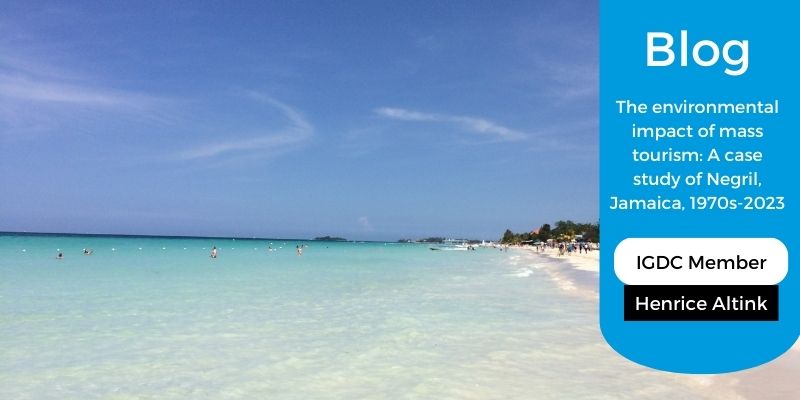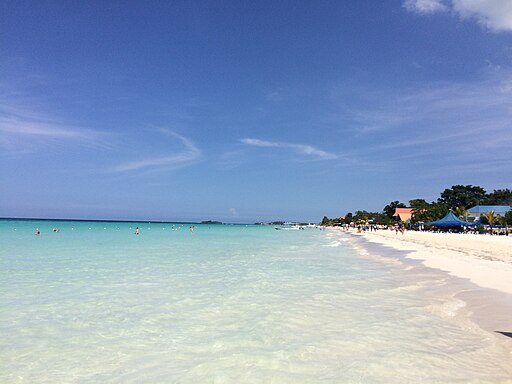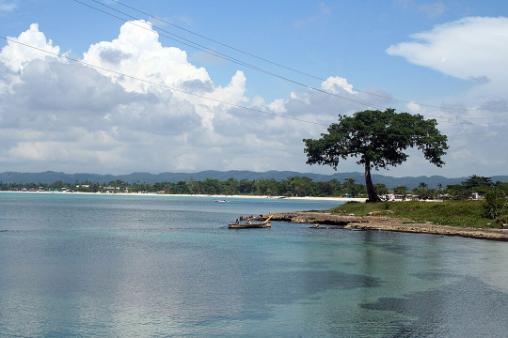The environmental impact of mass tourism: A case study of Negril, Jamaica, 1970s-2023
In this blog, Henrice Altink introduces her new article in Environment and History (online first February 2024), ‘Making Tourism Sustainable? Environment and Resort Tourism in Negril, Jamaica, 1970s–2002’. Mass tourism has had severe environmental impacts but there are hopeful signs that sustainability is becoming central to the development agenda in the 2020s.

Mass tourism generates jobs, brings in revenue and enhances cultural learning but can also lead to a dependency on tourism, a loss of cultural identity, pressure on natural resources and environmental degradation. Negril, one of the main resort areas in Jamaica, provides a useful case study for environmental historians to explore mass tourism’s environmental impact and attempts to make it more sustainable. It was planned by the Government of Jamaica (GoJ) as a resort town in the 1960s and 1970s, rapidly expanded in the 1980s and 1990s, when numerous large and mostly all-inclusive hotels were built, and had an active environmental lobby.

Negril Beach. Source: https://commons.wikimedia.org/wiki/File:Negril.jpg
The impact of the development of mass tourism on the coastal environment, including beach erosion, reef destruction and loss of mangroves, only becomes visible after some time. By the mid- to late-1970s, several scientists began to draw attention to the pollution of Negril’s coastal waters by sewage from hotels as many used septic tanks. In the 1980s, they were joined by local stakeholders, ranging from the Negril Chamber of Commerce (NCC), which was largely made up of small hoteliers, and local environmental groups such as the Negril Coral Reef Protection Society, set up by divers and diving operators. They lobbied both the GoJ and international donors to improve sewage disposal, supported by data that they had collected. For example, the NCC set up a water quality monitoring system and undertook a reef survey. These efforts had some success as the U.S. Agency for International Development (USAID) agreed to extend existing sewage lines and the European Economic Community (EEC) offered to fund a central sewage plant.
The GoJ was reliant on international donors to undertake sewage and other infrastructural developments in tourist resorts because of its limited fiscal space. In the 1980s, it took out several Structural Adjustment Loans that came with various conditions, including a reduction in public spending. The GoJ also made some marginal changes in planning processes by stipulating in the early 1990s that planning applications for hotels required an Environmental Impact Assessment (EIA) – an assessment of the impact of a planned project on the environment including vegetation, biodiversity, ecology and water. The EIA included a public discussion which local stakeholders in Negril actively used to raise concerns about proposed hotel developments. Other than changing planning processes and working with international donors to improve sewage infrastructure, the GoJ did little to make tourism more sustainable. It, for instance, never mandated that hotels adopt energy-saving practices. This was not just because of its financial constraints; tourism was key to the Jamaican economy – it was the main foreign-exchange earner – and it was a private-sector driven industry.

Alongside local stakeholders, international donors such as the World Bank also put pressure on the GoJ to address the environmental sustainability of the sector. They also provided funding for initiatives to make tourism more sustainable, such as USAID which in the 1990s ran a programme that worked with small hotels in Negril to undertake environmental audits. This should be seen in light of a global shift towards sustainable tourism; that is, ‘tourism that takes full account of its current and future economic, social and environmental impacts, addressing the needs of visitors, the industry, the environment and host communities’ (UNWTO). In the wake of the 1992 United Nations’ Earth Summit (also known as the Rio Conference) which highlighted the need to adopt the principles of sustainable development in a wide range of economic and social processes, the World Tourism Organisation published a set of recommendations for governments and tourism operators to make tourism more sustainable.
The combined pressure of local stakeholders and international donors along with regional and local initiatives to make tourism more sustainable, such as the Caribbean Hoteliers Association’s Action for Sustainable Tourism which provided workshops, training courses and guidance material for its members on a range of environmental issues, encouraged the GoJ to develop a Master Plan for Sustainable Tourism. Work started in 1998 when consultations were held with various stakeholders, including local communities, to assess the strengths and weaknesses of the industry. It was completed in 2002 and addressed all three impacts of tourism. With regards to the environmental impact, the plan mentioned a new location strategy, environmental mitigation measures and support for the industry to adopt sustainable practices, which addressed some of the concerns raised by environmental groups and industry stakeholders in Negril, including poor sewage infrastructure and lack of inclusive planning. But it was not radical. It largely built on work already going on in Negril and other resorts, such as environmental audits, and the GoJ remained reluctant to prescribe changes in the industry. Furthermore, the island’s overall tourism strategy remained firmly focussed on the 3Ss – sun, sea and sand – which led to more tourist arrivals and an increase in hotel accommodation. Between 2002 and 2018, the number of hotel rooms available in Negril increased from 3,543 to 5,965 and the number of stopover arrivals rose from 256,667 to 410,665 (Jamaica Tourist Board annual travel statistics).
Because of its dependency on tourism, Jamaica was hit hard by the pandemic, which caused a 10 per cent decline in real GDP (World Bank). In the wake of the pandemic, various new tourism developments have been negotiated with government support. EIAs for these developments, including the 2,000-room Princess hotel in Negril, have been quickly approved despite objections by residents and environmental groups that local infrastructure cannot accommodate these large-scale developments and that they will destroy flora and fauna. However, there are some hopeful signs that the GoJ is trying to strike a better balance between the economic and the environmental sustainability of tourism, most notably its decision to finally replace the Master Plan. With support from the Interamerican Development Bank and input from industry stakeholders and civil society organisations, the GoJ embarked in 2023 on the development of a new tourism strategy that will put sustainability – economic, social and environmental – at its centre (Ministry of Tourism, 2023).
Originally posted on 1 March 2024 on White Horse Press blog
Contact us
Interdisciplinary Global Development Centre
igdc@york.ac.uk
01904 323716
Department of Politics and International Relations, University of York, Heslington, York, YO10 5DD, UK
Twitter
Contact us
Interdisciplinary Global Development Centre
igdc@york.ac.uk
01904 323716
Department of Politics and International Relations, University of York, Heslington, York, YO10 5DD, UK
Twitter